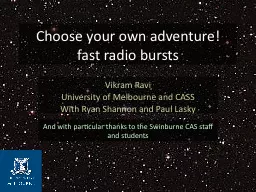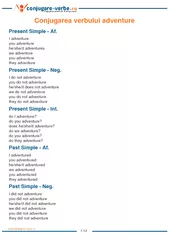PPT-Choose your own adventure!
Author : liane-varnes | Published Date : 2016-02-26
fast radio bursts Vikram Ravi University of Melbourne and CASS With Ryan Shannon and Paul Lasky And with particular thanks to the Swinburne CAS staff and students
Presentation Embed Code
Download Presentation
Download Presentation The PPT/PDF document "Choose your own adventure!" is the property of its rightful owner. Permission is granted to download and print the materials on this website for personal, non-commercial use only, and to display it on your personal computer provided you do not modify the materials and that you retain all copyright notices contained in the materials. By downloading content from our website, you accept the terms of this agreement.
Choose your own adventure!: Transcript
Download Rules Of Document
"Choose your own adventure!"The content belongs to its owner. You may download and print it for personal use, without modification, and keep all copyright notices. By downloading, you agree to these terms.
Related Documents














